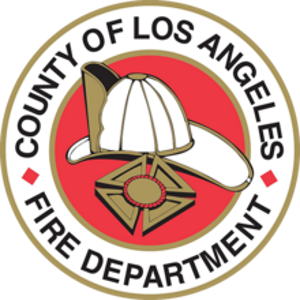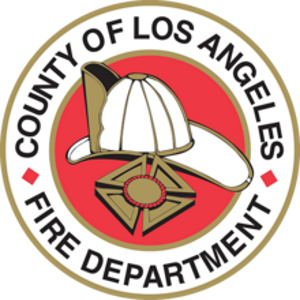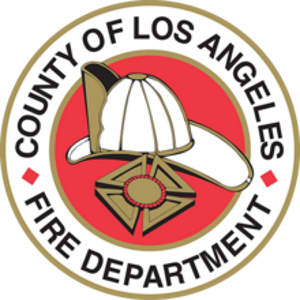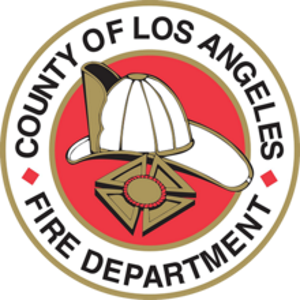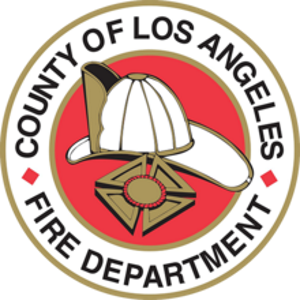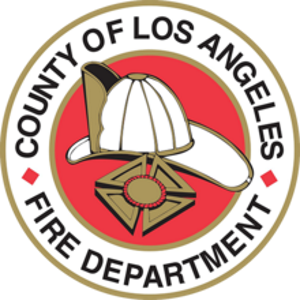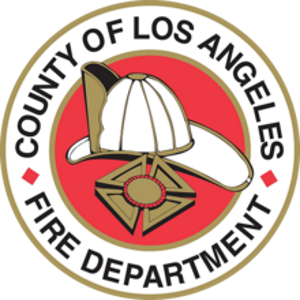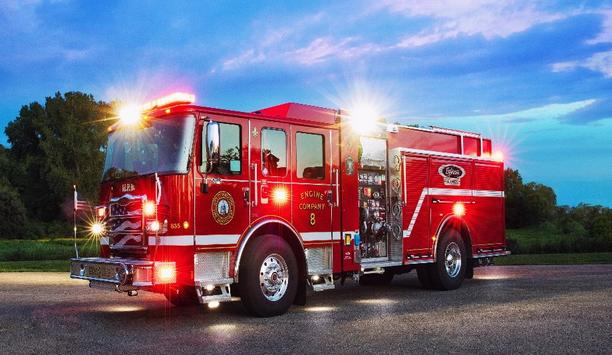Los Angeles County Fire Department - Experts & Thought Leaders
Latest Los Angeles County Fire Department news & announcements
Recently, Rosenbauer has built the first RTX for the North American firefighting market. The vehicle is destined for the Los Angeles City Fire Department and was developed jointly with the LAFD, with the "core DNA" being identical to the RT according to the European standard, while the technical design follows the regulations of the American NFPA (National Fire Protection Agency) is equivalent to. The RTX contains the technological know-how of ten years of development work in the Rosenbauer Group. The result is more than an "electrified fire engine"; it is the blueprint for the municipal fire engine of the future: a vehicle from a single source, functional and robust, with highly ergonomic vehicle architecture, an unprecedented level of safety for the crew and an innovative operating concept with comprehensive connectivity. The RTX combines safety, dynamics, and performance, everything that counts in a fire engine into a functional unit. Unrivaled driving characteristics Independent wheel suspension and switchable rear-axle steering ensure excellent agility and maneuverability What particularly distinguishes the RTX is its stable handling and high level of driving safety. It has a low-floor chassis with a core tube frame in which one of the two high-voltage batteries is installed, resulting in a much lower center of gravity than fire engines on truck chassis. Independent wheel suspension and switchable rear-axle steering ensure excellent agility and maneuverability, the RTX can even be moved in crab steering. The air-sprung chassis allows the driving level to be adjusted to the surface (road and off-road driving, watt mode, operation site mode) and due to the compact dimensions (L x W = approx. 8.25 x 2.35 m), the vehicle can be maneuvered more easily through narrow alleys and be piloted in heavy traffic. Energetic powerhouse The driving dynamics of the RTX result primarily from the electric drive concept: Two electric motors with an output of 2 x 180 kW (peak) and 2 x 130 kW (continuous) drive all four wheels (permanent all-wheel drive). They are supplied with electricity from two high-voltage batteries with an electrical storage capacity of 132 kWh, which also provides energy for pump operation and other consumers at the site. In addition, the RTX has a standard range extender (diesel engine with power generator) with an output of 225 kW, which is built into the body to save space. This turns the RTX into an integrated power plant that automatically recharges the high-voltage batteries when more energy is consumed than is stored in them. Safety and health RTX is practically emission-free and is also exposed to fewer pollutants and noise at the place of action The integral design of the RTX cabin ensures a high level of passive safety during the approach. Thanks to the air-sprung chassis, the vehicle can be lowered to the point where it is needed (175 mm above ground level) so that the crew compartment can be entered without barriers and the equipment stored in the vehicle can be removed from the ground with a secure footing. The shadowless LED ambient lighting and underfloor lighting increase safety around the vehicle. In addition, the RTX reduces the pollution of the emergency services to a minimum. Even on the way to the place of action, they are practically emission-free and are also exposed to fewer pollutants and noise at the place of action than before, because the majority of all technical and shorter fire-fighting operations can be carried out purely electrically. Modern Command Post In the RTX, the driver's cab and crew room merge into a modern command center in which briefings can be carried out in a quiet atmosphere protected from the wind and weather. For this purpose, the driver and front passenger turn their seats inwards and address the crew members who are seated on the sides of the vehicle facing each other and on the rear wall of the cabin facing the front. All of the vehicle's functions, from the lighting to the extinguishing technology, can be controlled via a 17" display installed centrally in the dashboard. In addition, the vehicle sets up its own W-LAN, which can be used to wirelessly control robots, drones, and other electrical equipment. Action on Hollywood Boulevard We are pleased that we were able to develop the RTX for America together with the Los Angeles City Fire Department" The RTX for the Los Angeles City Fire Department presents itself with a clear, consistent design line and branded front end. In Los Angeles, after extensive training and testing at Fire Station 82 on Hollywood Boulevard, it will go into regular service. Andreas Zeller, CSO of Rosenbauer International AG said, “We are pleased that we were able to develop the RTX for America together with the Los Angeles City Fire Department and that it will soon be able to demonstrate its capabilities in everyday firefighting.” “We also expect a strong impulse for sales from this, because many other US fire brigade organizations that have already shown interest in the vehicle are currently looking forward to LA and want to take the first practical experiences with the RTX into account when making their purchase decisions.” State-of-the-art concept Richard Fields, Assistant Chief Los Angeles City Fire Department said, “We were at the Rosenbauer Group headquarters in Austria at the beginning of February to accept our vehicle and had the opportunity to get to know it better, to drive it, and to test all of its functions.” “We were particularly impressed by the driving characteristics and driving comfort of the RTX, but the operating and control concept is also absolutely state-of-the-art. A vehicle that we will certainly enjoy, that has everything we need for our routine operations and with which we are also making a contribution to climate protection.”
ImageTrend, Inc. announced the winners of the 2021 Hooley™ Awards at the 13th annual ImageTrend Connect Conference. The Hooley Awards celebrate innovative ideas and programs in the EMS, fire and healthcare industries. Nominees were narrowed down to a field of nine finalists – three in each of the three categories – from which the winners were selected by a panel of third-party judges. Judges cast votes via secret ballot for each category. ImageTrend extends congratulations to the nominees, finalists and winners of the Sixth Hooley Awards. Pediatric Situation Tools To recognize those who are serving in a new or innovative way to meet the needs of their organization, including developing programs or solutions to benefit providers, administrators, or the community. Winner: Christopher Torno, Eureka Fire Protection District, Pediatric Situation Tools Chris created a Pediatric Situation Tool™ for Eureka Fire Protection District to assist with pediatric calls Chris created a Pediatric Situation Tool™ for Eureka Fire Protection District to assist with pediatric calls, which account for 8% of their annual call volume. This tool allows providers to focus on treating their patient and also properly document the incident using the time-stamp feature of Situation Tools. With the combined usage of the new Broselow bags and the Pediatric Situation Tools, providers have relayed a decrease in stress level during pediatric calls. Finalists: Christopher Torno, Eureka Fire Protection District, Pediatric Situation Tools Dana Cardenas, Tempe Fire, High Utilizer Predictions Celia Barry, Santa Cruz County, Improving Patient Treatment with SAFR Comprehensive decision tree To recognize those that are going above and beyond the call of duty, and breaking new ground or serving in a humanitarian way. Winner: Michael Wells-Whitworth, Montgomery County Hospital District, Care in Custody. MCHD utilized the sum total features in ImageTrend Elite™ worksheets When Montgomery County Hospital District (MCHD) realized a need to better understand and track the quality of care for patients in custody, MCHD utilized the sum total features in ImageTrend Elite™ worksheets to create a risk score for patients in custody and their risk for death. Using existing research for qualifiers, the worksheet guides their providers down a comprehensive decision tree when treating these patients Finalists: Michael Wells-Whitworth, Montgomery County Hospital District, Care in Custody Catherine Farrokhi & Nick Ritchey, Riverside County, POLST Integration in the Field Bryan Wells, Los Angeles County Fire Department, Unique Software Implementation and Application. Identifying areas for improvement Considers how data is being used to further the safety of their community or reach community goals, and acknowledges the fact that data is boundless and can be used in any number of ways for the benefit of society. Winner: Alexander Trembley, North Memorial Health Ambulance Service, Understanding Bias in Our EMS Communities Alex established a baseline for quantifying and better understanding implicit bias in EMS workers Alex established a baseline for quantifying and better understanding implicit bias in EMS workers with the goal of improving the overall health of the community. Alex endured difficult situations to complete this study and identify areas for improvement. This study will be important as we continue to evolve EMS to better meet social determinants of health and better serve the communities. Finalists: Tami Kayea, Dallas Fire Rescue, Expanded QA Program Scott Perryman, Sacramento Metropolitan Fire District, Community Health During a Pandemic Alexander Trembley, North Memorial Health Ambulance Service, Understanding Bias in Our EMS Communities “We are so impressed by the dedication of this year’s Hooley Award finalists and the initiatives they have helped lead,” ImageTrend President and COO Joe Graw said. “Fostering an environment for these innovative ideas and programs is essential to leading advancements in our communities and the industry as a whole.” The Seventh Hooley Awards will be presented during the 2022 Connect Conference.
Los Angeles County Fourth District Supervisor Janice Hahn recognized members of the Los Angeles County Fire Department (LACoFD) for assisting with the development of the Harbor Interfaith homeless shelter in San Pedro. Scrolls were presented to LACoFD Acting Deputy Fire Chief Nick Duvally, Battalion Chief Marvin Dorsey and Fire Captain Joseph Williams for helping to convert an old County office into a homeless shelter in six weeks. Members of the Department assisted with inspections, recommendations and ensuring that the shelter was safe for families. “Our team is honored to be recognized at the Board meeting and for representing the Fire Department,” said Captain Williams. “It is rewarding for the team to assist people facing homelessness. We are always here to help and serve people in need.”
Insights & Opinions from thought leaders at Los Angeles County Fire Department
The adoption of electric fire apparatus is accelerating their footprint in the industry. Fire departments from Los Angeles to Madison, Wis., from Portland, Ore., to Mesa, Ariz., have embraced the technology of electric and hybrid vehicles in the fire industry and are demonstrating the practical capabilities of this new generation of technology for the fire service. Sustainable commitment More municipalities worldwide are committing to sustainability and climate goals. Furthermore, truck producers in general are converting to electric drive systems. In the future, there will be fewer chassis available with conventional drivelines, making it necessary for fire trucks to go electric. Electric fire apparatus An electric fire engine is an innovative tool that will help reduce noise and harmful diesel emissions Electric fire apparatus made a big splash at recent trade shows, notably FDIC International in the United States and INTERSCHUTZ in Germany. An electric fire engine is an innovative tool that will help reduce noise and harmful diesel emissions and provide a flexible tool for firefighting and rescue operations from a technologically advanced platform. At INTERSCHUTZ, Rosenbauer presented a complete range of electric emergency vehicles, from municipal fire trucks including fully electric aerial ladders to Aircraft Rescue and Fire Fighting (ARFF) vehicles. fully electric fire truck A fully electric fire truck currently going into service in Los Angeles is the result of 10 years of research and development, with the Los Angeles City Fire Department working closely with Rosenbauer America to address the challenges and obstacles of deploying the truck within the city’s system. Two more Rosenbauer electric trucks are being demonstrated in fire departments in the U.S. and Canada, and another truck is coming next year. Rosenbauer projects that half of all vehicles they deliver to fire departments should be electrified by 2030. Addressing the issues with an electric truck Training and operations must be considered when replacing a traditional apparatus with a new electric truck Issues such as training and operations must be considered when replacing a traditional apparatus with a new electric truck. One change is more space available on the electric truck for equipment storage, says Rosenbauer. The City of Madison, Wis., Fire Department is deploying an Enforcer Volterra Pumper from Pierce Manufacturing Inc. The apparatus uses an “electro-mechanical infinitely variable transmission” that can switch imperceptibly between the electric and diesel modes. Fine-tuning the design The Volterra pumper will work on the front lines at Station 8, the city’s busiest fire station. Madison Fire Department worked with Pierce to “fine-tune” the design. The department seeks to have their electric trucks “mimic” the operation of the older trucks. In Madison, the city’s fleet manager is driving a push toward electrification throughout the vehicles used by the city; the Pierce apparatus enables the fire department to deliver on that expectation. The city anticipates buying two or three additional electric fire trucks in the next year or so. E-One Vector fire truck Additional features include a battery storage solution that offers a safer, lower center of gravity and regenerative braking EV Fire Group announced the all-electric E-One Vector fire truck last August and debuted it in multiple presentations on the FDIC International show floor in April 2022. The customizable Vector features a long electric pumping duration that allows four hose lines to be used for four hours on a single charge. Additional features include a battery storage solution that offers a safer, lower center of gravity and regenerative braking. cost-savings and efficiency Mesa, Ariz., is the first city to order the Vector, with delivery expected this year. The rig supports the City of Mesa’s Climate Action Plan, to achieve carbon neutrality by 2050. They expect the new rig will demonstrate potential cost-savings and efficiency of electric vehicles throughout city operations. In developing Vector, REV Fire Group worked closely with customers to identify their needs and fine-tune the product based on feedback. Volterra platform Oshkosh provides a Volterra platform for a hybrid ARFF vehicle, which is debuting at airports Pierce Manufacturing and Oshkosh Airport combined efforts to introduce the Volterra platform of vehicles for the fire and emergency market. Oshkosh provides a Volterra platform for a hybrid Aircraft Rescue and Fire Fighting (ARFF) vehicle, which is debuting at airports across the United States. Innovative fire suppression technology The hybrid electric vehicle (HEV) meets the emergency response needs among airports. The first Striker ARFF deployment is at Minneapolis-St. Paul International Airport. Available on 4x4 and 6x6 chassis platforms, the Striker Volterra delivers superior chassis performance, advanced safety systems, innovative fire suppression technology, reliability, and durability.
The New Future For Fire Agencies
DownloadThe Eight Key Trends in Fire Detection in 2023
DownloadA Digital Platform to Improve Fire Safety Compliance and Inspections
DownloadOvercoming the Challenges of Fire Safety in the Paper Industry
DownloadCarbon Monoxide: Creeping Killer Caught In The Act
Download